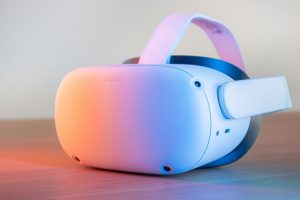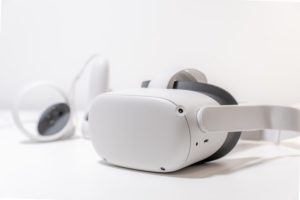Everything You Need to Know About VR
Read on to find out everything you need to know about VR, as well as how this technology works.
How Does Virtual Reality Work?
Virtual Reality has exploded on the scene and is now one of the fastest-growing and developing sectors in the world of tech. It isn’t hard to see why either; it has numerous applications, from gaming to medicine.
You can think of this post as a gaming guide you need for virtual reality. If you don’t understand what it is or want to know how it is used today and how it will be used in the future, this post is for you.
What is virtual reality?
The first question you may have is, what is virtual reality? Simply put, VR is a 3D representation of a virtual world. If you go outside and look around, you can see the sky, hear birds, hear people talking, etc.
VR is designed to bring those same experiences but in a virtual, man-made world. You use a headset, which will be discussed next, to see and hear the virtual surroundings. This headset is designed to recreate this virtual world as close to real-life as possible.
Headsets
Currently, headsets are the primary way of experiencing virtual reality. There are other VR hardware and flight simulators used by pilots and astronauts, but everyday people can use headsets.
It comprises the main piece that fits over your eyes and provides the visuals, and then headphones that provide the audio.
Field of view
The field of view for virtual reality headsets is one area where developers are putting in a lot of work, as it is an area that can break the immersion experience if it isn’t done correctly. Humans have a field of view of about 220 degrees, while headsets can provide a field of view of 180 degrees.
While the fields of view are different, having headsets with the same field of view as humans is just not possible at the moment, but technology is evolving every day, and it is an area in which we are sure to see improvements soon.
The other aspect of the visuals that need to be the best, is the frame rate. Our eyes don’t have the same type of “frame rate” as computers do; what we are looking at doesn’t become blurry as we move because it is “loading in.” VR developers know this is another area that can break the immersion.
However, there are some numbers developers are working with. Our eyes work at a frame rate of about 1000 frames per second, but our brains can’t handle that. Developers have discovered that 60FPS is the sweet spot to keep the image clear and realistic without making us disoriented and sick.
Audio
Audio, while slightly easier than the visual aspect, is still a vital component to the immersion. Spatial audio, or 360-degree audio, is what adds to the complete 360-degree experience. If you stand outside, all the sounds you hear don’t just come from in front of you, or behind, or to the left or right.
The sounds can be above you, below you, in front of you but behind a wall, to your back-left and 20 feet away, or above you and to the right. There are many permutations to where sound can be and come from; VR headphones need to mimic this.
Audio advancements are being made all the time, but right now, we have excellent audio as part of VR headsets that make you feel like you are where the developers intended, even when you close your eyes and just listen.
Head position and tracking
Head tracking is essential to make sure the picture you are seeing moves with where your head is. Many virtual reality headsets are built with either 6 degrees or 3 degrees of freedom.
6-degree movement allows headsets to track your position in a room and then adapt it to what you see. You can walk around, and therefore move in the virtual world, with the headset also having sensors that stop you from walking into the wall or something.
Tracking technology is also extending to the user’s eyes. Many people who wear VR headsets can’t focus correctly, which is when you start feeling dizzy. Eye tractors are helping to focus where you are looking and make it less likely to disorientate you. If you look forward, not everything your eyes can see is in focus; developers are doing the same with headsets.
Controls and movement
Currently, you can move in VR by either walking or using controls. Controls are needed for holding and using weapons, opening doors, etc., movements, and activities that can’t be done in the virtual world.
There are set-ups out there that allow you to move in place. You get strapped to support bars, and you stand on a concave platform that works like a treadmill, except you can move in any direction. This allows you to walk and run in place in the real world but move freely in the virtual world.
Current and future uses
VR is used for gaming and exploration at the moment, but its future uses are fascinating. As mentioned, pilots currently use flight simulators, but imagine a doctor putting on a VR headset and performing surgery on someone on the other side of the globe.
Robotic arms control the instruments, and the doctor controls the components through VR. While this sounds futuristic, the ability to work in VR and then have real-life results can change many different industries, from medicine to mining.
The line between games and the real world will also become more blurred as the VR experience continues to become more and more realistic. Soon we will be able to explore the worlds we know and love, like Johto from Pokemon, or be dropped into the Warzone map.
VR is advancing so quickly it is becoming hard to keep up, but it is an incredibly exciting and versatile field that will change far more than just how we game.






